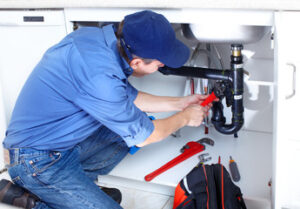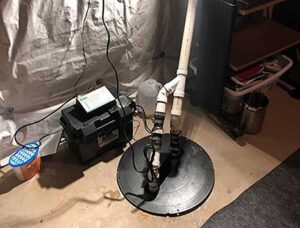Plumber Sarasota specializes in installing and repairing pipes and fixtures that facilitate water distribution and waste disposal in buildings. They need stamina to perform strenuous physical labor and must be able to identify and resolve a wide range of issues.

Their work involves interpreting blueprints and building codes to plan plumbing installations, and they may collaborate with architects and construction teams to ensure that new systems comply with required standards and regulations.
A plumbing estimate is an important document that can help a home owner understand what they will be charged. It should include the type of repair, hourly rate, estimated time the work will take, and additional fees like travel time. It should also detail any payment terms and whether the plumber offers financing.
Most plumbers are required to complete a formal apprenticeship that includes classroom instruction and paid on-the-job training. In addition, many states require a license to work independently as a plumber.
While it is possible to get an accurate picture of the cost for a standard or straight-forward job over the phone, providing an estimate for complex repairs on-site is much more difficult. This is especially true for jobs involving leaks, clogged drains, and other issues that need to be investigated to find the source of the problem.
During the initial visit, a good plumber will be willing to walk through the entire job with the homeowner. This will allow them to better explain the situation and the costs involved, including any possible solutions. It will also give the homeowner a chance to ask any questions they have.
For larger jobs, a plumber will likely provide the home owner with a written estimate. This will be more detailed than an over-the-phone estimate and will include a breakdown of the parts, labor, and equipment needed to make the repair. It will also include the approximate price of any new parts that may be required to complete the work.
If the plumber is working on an hourly basis, he or she will need to charge for any time that is incurred above what was originally estimated. This is one reason why it is a good idea to ask about the plumber’s markup on parts and labor. If the plumber is open about their markup, they will be more likely to set their prices fairly and be competitive without driving away customers.
Get a Better Estimate of Arrival Time
When you call a plumber, it is important that they take the time to listen and understand the problem before giving an estimate. During this conversation, they should ask about how long the job has been an issue, what you have already tried to fix, and any other pertinent details. This will help them give you a more accurate quote.
It’s not always possible to narrow in on an exact appointment time frame due to the amount of time each previous job takes, but a plumber should still be able to give a ballpark estimate of arrival time. They should also let you know if they will be arriving early or late, and they should always keep you up to date on their progress.
Another thing to look for is a plumber that will allow you to pay upon completion of work rather than before the appointment starts. This is because you want to ensure that you are working with a professional plumbing company that values their clients and the work they do.
If you have a burst pipe or an emergency call-out, it can be easy for plumbers to lose track of their time. With an on-the-job management system like ServiceM8 in place, it will remind your plumbers to clock in and out when they begin and end their workday, and if they forget, they can manually add manual time entries.
You can also stay connected to your customers before, during and after their appointment with automated emails and texts that include photos from the on-site assessment and an online quotation. This will make it easier for them to get started with you and stay updated as the work gets underway.
Ask for Referrals
Referrals are a key part of any plumbing sales strategy. They have a higher closing ratio than other types of leads, and they can help you grow your business faster. However, it’s important to ask for referrals the right way.
First, make sure that your customers are happy with your work. If a customer doesn’t feel like they’re getting the best possible service from you, they’ll be less likely to recommend you to their friends and family. So, always be respectful of your customers’ time and make sure they feel valued.
Another great way to get more referrals is to get involved in the community and find out where your potential customers are hanging out. Many people look for plumbers on social media, so make sure you have a presence there and respond to any questions. You can also participate in discussion forums on sites like Quora and Reddit, where you can share your knowledge of plumbing issues.
If you’re a plumber with a large email list, you can also use it to spread the word about your referral program. Just remember to send your emails in a timely manner, and to remind people about the terms and conditions of your program.
Finally, don’t forget to ask for referrals from non-plumbers as well. Other tradespeople often have great contacts in the industry and can help you find the plumber you’re looking for. For example, if you need a plumber to repair your boiler, you could ask your heating engineer for a recommendation. Alternatively, you could ask your local electrician or builder for a plumber who has done a good job on their properties. This will ensure that your plumber is up to scratch when it comes to quality and safety.
Be Prepared
Even for the most seasoned do-it-yourselfer, there comes a time when a plumbing problem is too big to handle without the help of a professional. When this happens, you will want to be prepared when the plumber arrives so that they can efficiently and effectively solve your problem.
One of the most important things that you can do is clear out the area where the plumber will be working. This will help them work more quickly and ensure that they do not accidentally damage any of your belongings. You should also move any boxes, extra furniture, or other items that could get in the way of them working.
Another thing that you should do is prepare a list of all the issues that you want them to address. This will make it easier for you to communicate with them and will also allow them to understand your needs better. If you have a specific budget that you want them to stick to, be sure to let them know.
Be sure to provide the plumber with a detailed account of what you’re experiencing and any other relevant information, like when you first noticed the issue and any previous attempts at solving it. This will help them figure out the best course of action for your situation and will enable them to resolve the problem as quickly and efficiently as possible.
Finally, if you have any pets, make sure to keep them away from the work area. This will not only keep them from distracting the plumber, but it will also ensure their safety from any sharp tools or components that they may be working with.
Be Honest
A good plumber is willing to be transparent with their customers and should be able to clearly explain the work they will do. They will also be upfront about the price and any potential additional charges they may encounter. However, not all plumbers are honest and there are some who will try to scam their customers. For instance, you should be wary of any plumber who asks for a large deposit up front before beginning the job. It is also important to know whether or not the plumber is licensed and insured.
A plumber should be able to communicate effectively with their clients and should have strong interpersonal skills. This will allow them to listen carefully and understand the nature of a problem. They should also be able to recommend suitable solutions. They should use clear and simple language that is easy to understand, avoiding technical terms where possible. A good plumber will also be respectful of their client’s home and property. For example, they will take off their shoes when entering and will put plastic booties over their boots if working on carpet. They will also clean up their workspace at the end of each day.
A plumber should also be punctual and reliable. This is especially important as they will be spending a lot of time in your home and you want to make sure that they show up when they say they will. Moreover, a punctual plumber shows that they are committed to their work and will be able to meet deadlines. If a plumber is constantly late, then they are probably not the right choice for you. Additionally, a punctual plumber will ensure that they have all the necessary equipment for the job. This will prevent any delays or extra costs down the road.

